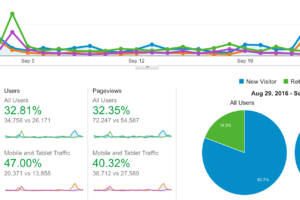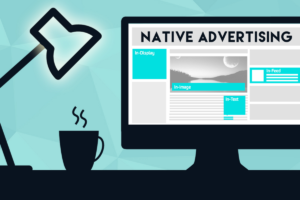For this month’s Ask the Expert column, I interviewed Ashley Lockridge, Associate Director of Strategic Services, and Elaine Yavorcik, Client Partner at Experian Marketing Services. Each day, they work with clients to help them push the boundaries of marketing, encouraging them to add new channels and tactics to reach the customer in the best place at the best time.
Want to join the conversation? Tweet your comments to @elaineyav, @Addilock and @ExperianMkt using the hashtag #AsktheExpert.
Two channels that seem to go hand-in-hand are email and social. Do you see clients integrate these channels successfully? How are marketers you work with excelling in email + social integration?
AL: Email and social can definitely work well together, and the key is interconnectivity – making sure that messages are not only well-aligned, but truly complimentary. Social can take the interaction further by allowing users to add their own content and reviews, participate in contests and sweepstakes and really move the message to a dialogue. Additionally, top brands are incorporating email to monetize social – utilizing social interactions to identify the products and services that are most valuable to users, and sending a corresponding email that makes it easier for the user to make the purchase.
EY: The clients that I see at the forefront in this space are taking a couple of things into consideration. First, they’re using actual data that the user has shared on the social site. Second, they are incorporating that with real-time action, connecting social interactions to an automatic response via email.
Clients at the forefront of email and social incorporate social data with real time action
Do you see these tactics work for every brand?
EY: No, brands should always test – they should never just copy what someone else is doing. Some brands may have a huge following on social and it may be integral to their strategy, while others don’t have a lot of traction in that channel. Going through the effort of gathering and incorporating social data into your email strategy doesn’t make sense if social isn’t a priority for your audience.
AL: Agreed. Also, every brand has a different mix. Depending on the audience, some might be more active on Facebook, while others are more active on Pinterest or Snapchat. So really, the execution on each of those channels is going to be extraordinarily different. It’s not one-size-fits-all.
Do you have recommendations for what marketers should test first? How can they know what kinds of results to look for?
AL: There are multiple different types of tests out there. To be statistically significant, you’ll have to conduct more than a one-time observational test, and the longer you can test something, the better. If you see dramatically increased results after one time, it doesn’t mean it’s sustainable, so it’s vital to build a sense of longevity into your testing plan. Unfortunately there’s no magic number – it’ll depend on your audience size.
EY: I agree. Specifically with email and social, you can look at whether the KPIs for a social-focused email outperform the KPIs for a standard bulk email, and I think you’d generally be looking at opens, clicks, transactions…
AL: But another thing to remember is that the end goal isn’t always transactions, especially in social. A big part of social is building brand loyalty, so other important KPIs could be the lift in your email list, amount of user-generated content shared, etc. It depends on the campaign, and that’s why you should determine the goal of each campaign before you begin.
The end goal isn’t always transactions, especially in social
In those newer platforms (like Snapchat), there seem to be a lot fewer metrics available to marketers than there are in the more established social entities. Do you have a recommendation for how to test newer channels without those measurements?
EY: Offer exclusive content to that channel. In Snapchat, for example, you could include an exclusive deal or sweepstakes that users can then take online or in-store, allowing you to measure not only how many people viewed the snap but how many people actually took an action from it. It’s a bit dirty but it’ll at least give you an idea of what’s working.
AL: I know that upstream traffic has become a bit controversial, but I believe it’s still a relevant metric to observe. Seeing how much of your website traffic was driven from each type of social page can help a brand understand which of their social communities are effective in encouraging action.
Anything else you’d like to add about email and social?
EY: A lot of the tactics we’ve talked about are pretty advanced. I often tell my clients to look for quick wins – look at the data for the top liked things on Facebook or Instagram and creatively feature them in email. That’s always a simple first step.
AL: And it’s important to realize that these tactics don’t just apply to the retail vertical. Other industries, like travel, thrive on social ratings, reviews and sweepstakes – things that can be promoted and utilized in their emails. Financial services can also make great use of social data to better target new services or offers within email. Though specific details may vary, the core tactics can be used across verticals.
“Email and Social: Better Together, but Not One-size-fits-all.” Marketing Forward RSS. Katie Oakes, 27 May 2015. Web. 29 May 2015.





